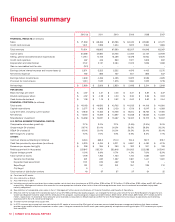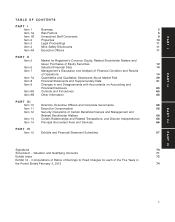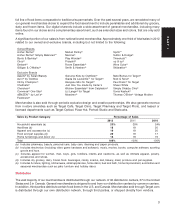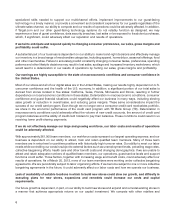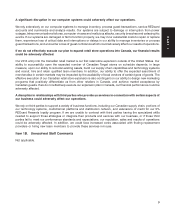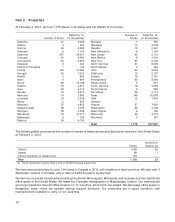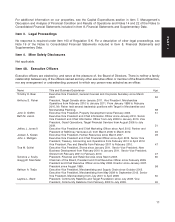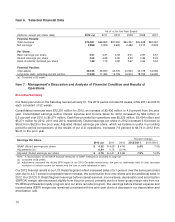Target 2012 Annual Report Download - page 22
Download and view the complete annual report
Please find page 22 of the 2012 Target annual report below. You can navigate through the pages in the report by either clicking on the pages listed below, or by using the keyword search tool below to find specific information within the annual report.specialized skills needed to support our multichannel efforts, implement improvements to our guest-facing
technology in a timely manner, or provide a convenient and consistent experience for our guests regardless of the
ultimate sales channel, our ability to compete and our results of operations could be adversely affected. In addition,
if Target.com and our other guest-facing technology systems do not reliably function as designed, we may
experience a loss of guest confidence, data security breaches, lost sales or be exposed to fraudulent purchases,
which, if significant, could adversely affect our reputation and results of operations.
If we fail to anticipate and respond quickly to changing consumer preferences, our sales, gross margins and
profitability could suffer.
A substantial part of our business is dependent on our ability to make trend-right decisions and effectively manage
our inventory in a broad range of merchandise categories, including apparel, home d´
ecor, seasonal offerings, food
and other merchandise. Failure to accurately predict constantly changing consumer tastes, preferences, spending
patterns and other lifestyle decisions may result in lost sales, spoilage and increased inventory markdowns, which
would lead to a deterioration in our results of operations by hurting our sales, gross margins and profitability.
Our earnings are highly susceptible to the state of macroeconomic conditions and consumer confidence in
the United States.
Most of our stores and all of our digital sales are in the United States, making our results highly dependent on U.S.
consumer confidence and the health of the U.S. economy. In addition, a significant portion of our total sales is
derived from stores located in five states: California, Texas, Florida, Minnesota and Illinois, resulting in further
dependence on local economic conditions in these states. Deterioration in macroeconomic conditions, consumer
confidence and guest financial situations could negatively affect our business in many ways, including slowing
sales growth or reduction in overall sales, and reducing gross margins. These same considerations impact the
success of our credit card program. Even though we no longer own a consumer credit card receivables portfolio,
we share in the economic performance of the credit card program with TD Bank Group (TD). Deterioration in
macroeconomic conditions could adversely affect the volume of new credit accounts, the amount of credit card
program balances and the ability of credit card holders to pay their balances. These conditions could result in us
receiving lower profit-sharing payments.
If we do not effectively manage our large and growing workforce, our labor costs and results of operations
could be adversely affected.
With approximately 361,000 team members, our workforce costs represent our largest operating expense, and our
business is dependent on our ability to attract, train and retain qualified team members. Many of those team
members are in entry-level or part-time positions with historically high turnover rates. Our ability to meet our labor
needs while controlling our costs is subject to external factors such as unemployment levels, prevailing wage rates,
collective bargaining efforts, health care and other benefit costs and changing demographics. If we are unable to
attract and retain adequate numbers of qualified team members, our operations, guest service levels and support
functions could suffer. Those factors, together with increasing wage and benefit costs, could adversely affect our
results of operations. As of March 20, 2013, none of our team members were working under collective bargaining
agreements. We are periodically subject to labor organizing efforts. If we become subject to one or more collective
bargaining agreements in the future, it could adversely affect our labor costs and how we operate our business.
Lack of availability of suitable locations in which to build new stores could slow our growth, and difficulty in
executing plans for new stores, expansions and remodels could increase our costs and capital
requirements.
Our future growth is dependent, in part, on our ability to build new stores and expand and remodel existing stores in
a manner that achieves appropriate returns on our capital investment. We compete with other retailers and
6




